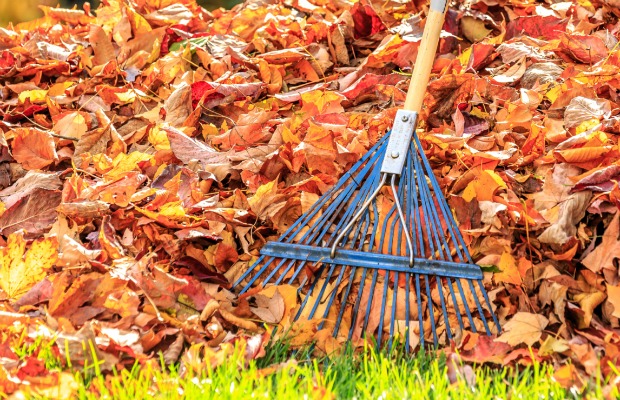Fall is the best time of year, and I love everything about it–except maybe raking up the leaves. Leaf piles are kid magnets, so as soon as you get a pile raked up, it seems to be scattered before you can even turn around. {Though admittedly, that’s one of the fun parts of Fall!}. But once the fun is done and you have to get the leaves off the ground before the snow flies, it’d be nice to have some tips up your sleeve to make it easier, wouldn’t it? Today’s post is dedicated to sharing some painless ways to rake leaves. Stick around for some leaf raking tips & tricks!

Time your clean-up efforts on a day when it’s not windy. Fighting the wind for every little leaf just makes the job so much harder to complete. If you’re trying to beat a storm and the wind kicks up, at least rake in the direction that the wind is blowing. That way, you might get a little help from Mother Nature.
Don’t try to rake the whole yard until the majority {or all} of the leaves have fallen. Instead, just clean up the sidewalks and pathways leading to your house as needed. That’ll keep things looking tidy until the trees are bare.
Don’t try to rake up the leaves right after a rain. Wet leaves are much harder to get up, so you’ll have to work even harder to finish the job.

Use a small tarp to help you collect the leaves. Rake leaves right onto a tarp, and when it’s full have someone help you carry it to the trash or to a designated compost bin to dump. After each dump, you can move the tarp to a new area that still needs raking.
Be careful of your back when you rake leaves. Use good posture {in other words, stand up straight}. Switch dominant hands frequently. Use your legs and bend at the knees when stooping to pick up your piles. Remember that raking is actually a good workout, so take breaks as needed and don’t forget to hydrate.
If you like to use the leaves in your garden, then drop the rake and take advantage of a mulching mower. It’ll pick up the leaves while tearing them into small pieces. You can then just empty the bag into the garden areas where you need them.

Leave a Reply